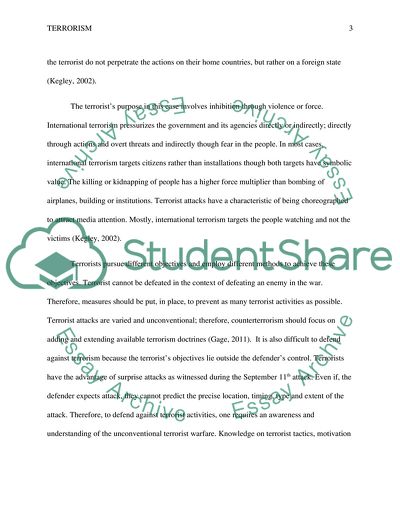Cite this document
(The New Global Terrorism Book Report/Review Example | Topics and Well Written Essays - 2250 words, n.d.)
The New Global Terrorism Book Report/Review Example | Topics and Well Written Essays - 2250 words. Retrieved from https://studentshare.org/sociology/1777905-a-summarization-understanding-of-the-major-themes-in-the-book-the-new-global-terrorism-isbn-978-0130494139
The New Global Terrorism Book Report/Review Example | Topics and Well Written Essays - 2250 words. Retrieved from https://studentshare.org/sociology/1777905-a-summarization-understanding-of-the-major-themes-in-the-book-the-new-global-terrorism-isbn-978-0130494139
(The New Global Terrorism Book Report/Review Example | Topics and Well Written Essays - 2250 Words)
The New Global Terrorism Book Report/Review Example | Topics and Well Written Essays - 2250 Words. https://studentshare.org/sociology/1777905-a-summarization-understanding-of-the-major-themes-in-the-book-the-new-global-terrorism-isbn-978-0130494139.
The New Global Terrorism Book Report/Review Example | Topics and Well Written Essays - 2250 Words. https://studentshare.org/sociology/1777905-a-summarization-understanding-of-the-major-themes-in-the-book-the-new-global-terrorism-isbn-978-0130494139.
“The New Global Terrorism Book Report/Review Example | Topics and Well Written Essays - 2250 Words”, n.d. https://studentshare.org/sociology/1777905-a-summarization-understanding-of-the-major-themes-in-the-book-the-new-global-terrorism-isbn-978-0130494139.


